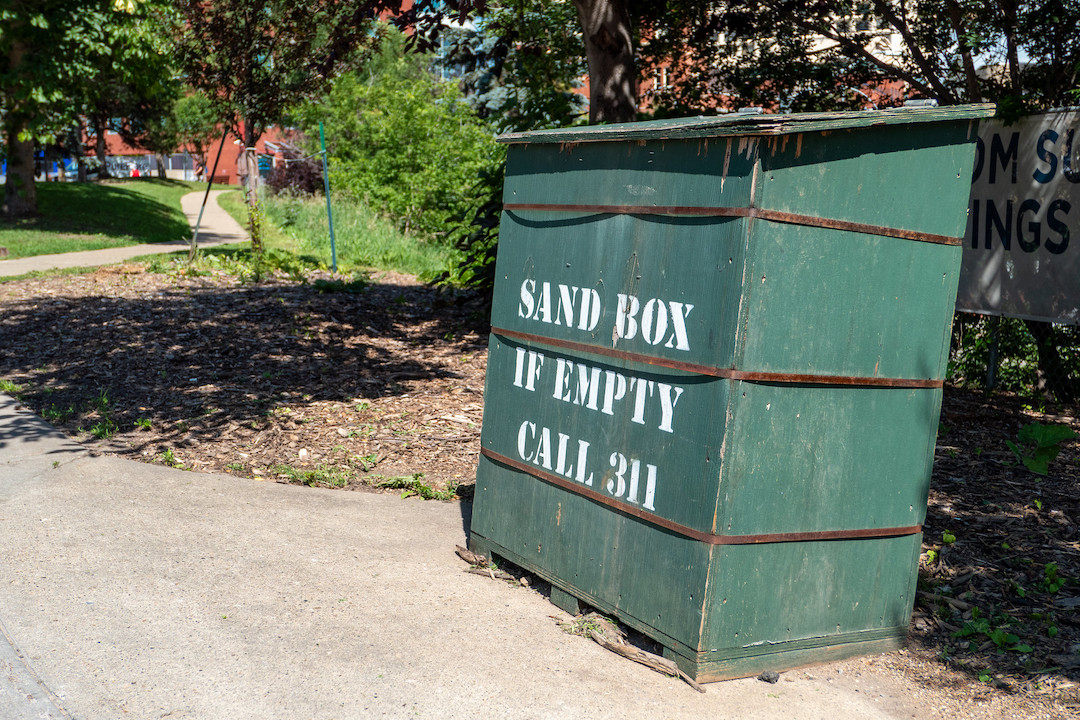The City of Edmonton's plan to reduce the number of community sandboxes from 770 to 100 over two years could dismay residents, say the hosts of Speaking Municipally.
"We've just lost 70, then to go from that to just 100 centralized sandboxes — that's quite the change," Mack Male said on Episode 237 of Taproot's civic affairs podcast. "At least we're getting some notice, but I think people are going to be pretty upset by that change."
The city announced on Oct. 12 that the number of public sandboxes will decrease from 770 to 700 this winter, then further decrease to 100 locations in the winter of 2024-2025. The sand is free for anyone to use to make icy sidewalks more passable.
"Changes are being made to the program over the next two winter seasons so that more resources can be dedicated to improving Snow and Ice Control service levels for Active Pathways, including bus stops and public amenities," the release reads. "The program will transition to fewer — but more centralized — sandboxes that are evenly distributed across neighbourhoods."
Male and co-host Troy Pavlek both noted that the decrease for 2024-2025 is dramatic. "There's a middle ground," Pavlek said. "There's an incremental way to do this."
The decision followed a call for public engagement in February that presented citizens with four options for the future of sandboxes: add more, maintain the status quo, replace community boxes with just eight larger bins, or reduce and redistribute the existing boxes.
"The two sort of neck-and-neck most popular options were reduce-and-centralize or status quo," Male said, noting that 35% opted for the status quo, with 33% choosing reduction and centralization.
The option the city is going with is expected to save $800,000, which will be reallocated to other forms of snow and ice control. Male opined that while this won't make a substantial difference, "every little bit helps."

The city is reducing and redistributing community sandboxes over the next two winters. The number will decrease from 770 to 700 this winter and plunge to 100 next winter. (Mack Male/Flickr)
The episode also detailed a motion by Mayor Amarjeet Sohi to take $5.114 million from the LRT reserve and add it to the snow-and-ice removal budget over the next three years.
The mayor's motion followed a report to urban planning committee that says Edmonton is on track for reduced clearing for the coming winter. It goes on to say that the time to manually clear bus stops, pathways, and other public amenities could rise from 13 days to 22 days. The matter is slated to come before city council on Oct. 24.
"It's because last year city council dumped a bunch of one-time funding into snow-and-ice control to fix this problem for (that) year, so that (they) can develop a long-term solution for subsequent years," Pavlek said. "We're rolling into winter, and I'm not seeing the long-term solution that we were supposed to have developed."
Hear much more on the Oct. 13 episode, which also tackles transit issues concerning youth and vandalism, completed testing by TransEd on the Valley Line LRT, city efforts to reduce the impacts of Stony Plain Road construction on businesses, and more.
